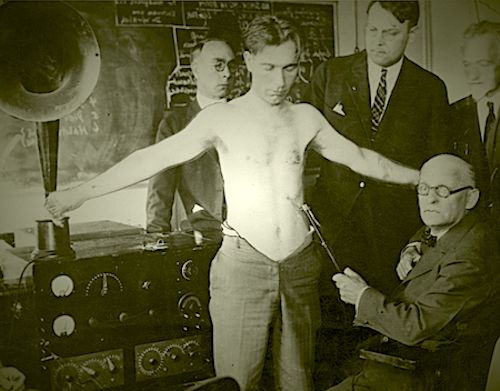Soundwork

A day does not go by in the era of social media and news, where the topic of ‘sound healing’ or the use of sound for well being is not mentioned or referenced. In fact if you simply do a search on a search engine like Google, on the term ‘sound healing’, nearly 11 million results occur. Indeed, one would say that there’s a certain degree of popularity here. Within the internet search we find topics like ‘Sound is the Medicine of the Future ’ , which alone will produce 93 million results on Google. The term itself is attributed to the western psychic Edgar Cayce, but what’s fascinating, is even his own research center in Virginia cannot find in their huge database, a reference where he uttered those exact words. But it is compelling, that with 93 million results on that phrase specifically, interest in this topic has become overwhelming. Even the term ‘sound worker ’ will fetch 172 million search results, in which this web page has contributed to that total number.
Whats fascinating about this interest, is that if you internet search on Music Therapy for example, 18 million search results are listed, compared to 22 million for the term ‘Sound Therapy.’ It would seem by this example, that there’s now a greater interest on the later term at present, than ever before. This is not to say that Music Therapy is losing popularity, but that more and more people each day, are taking notice that the therapeutic effect of sound and music is important in their minds. If we turn to science for a moment, research suggests that the majority of neurological clinical studies use music and sound to better understand how the brain works. So how did this interest develop to the level of popularity we find today?

Music Therapy emerged on the horizon in western culture formally after World War 1, but the idea of music as a healing influence which could affect health and behavior is found in the writings of Aristotle and Plato. Many in the West point to Pythagoras as the first to teach a philosophical nature to healing with music, harmonics, and the development of the western musical scale. Upon closer examination however, the musical scale attributed to Pythagoras was in use for nearly 1000 years before he was born! This in no way diminishes his contribution to western culture, but highlights how much is missing from the general understanding of sound healing in the West. One could point to the oldest book that has survived antiquity, the Rig Veda, which is comprised of 4 books, in which the Samaveda (song knowledge), could be considered the earliest surviving text on Music Therapy in written form. Scholars like Dr. Rhami Oruc Guvenc and Mitch Nur, PhD argue that man’s relationship to music as a therapy extends far back into history, quite possibly to 14,000 years ago. An argument by Howard Barry Schatz points to the Hebrew patriarch Abraham, as having secreted harmonic knowledge into the text known as the Sefer Yetzirah, a extant book on Jewish esotericism; and the British scholar Richard J. Dumbrill presents compelling evidence in his studies on Musicology and Organology of the ancient Near East. The earliest known reference in the United States regarding Music Therapy appeared in an unsigned article in Columbian Magazine in 1789. But our recent fascination seems to have been stirred by Dr. Mitchell Gaynor’s books ‘ Sounds of Healing’ and ‘The Healing Power of Sound’, as well as Jonathan Goldman’s book ‘Healing Sounds.’ But one only needs to navigate within this website to our library page, to see that there exists many books on the subject of sound healing today. Internet resources such as the Sound Travels website in the UK and their Sound Forum website, or here in the USA, The Sound Healing Forum allows readers to keep abreast of news. workshops, conferences, and discussions on this subject. Membership in organizations like the Harmonic Therapy Association advances Research, Education and Training by advocating best practice standards while providing a forum for the exchange of ideas, knowledge and experience in Sound and Music Therapy. There’s hardly a yoga studio now that does not offer relaxation with gongs, Himalayan or crystal bowls; and we see more and more musical healing events with didjeridoo or Kirtan for example than ever before.
The popularity of items like tuning forks, extends far beyond the average music store now. Using this as an example, BioSonics, Accutonics, and author teachers John Beaulieu, Eileen McKusick, Donna Carey and Marjorie de Muynck, and even musical instrument manufacturer Meinl have made tuning forks a household name. Interest in Cymatics, Solfeggio, Fibonacci, Binaural Beats, has earned widespread attention to the point of hysteria. Only a few decades ago, no one in the West knew what Overtone Singing was about, or Sacred Chant. A world of possibilities has now presented itself. Look at how popular the work of Masuru Emoto became, once the Japanese author was embraced by the sound healing community. One could argue that the popularity of the gong skyrocketed once the western Kundalini Yoga community embraced it through their teacher Yogi Bhajan, even though Swami Sivananda never used the gong in his earlier Kundalini trainings, but we’ve come a long way from Tibetan Buddhist monks chanting in Himalayan monasteries to television commercials and popular movies.

But it’s important to point out that with this rising popularity comes responsibility, to pursue fact over fiction, science over pseudo-science, a knowledge of accurate history, and a respect for the various lineages whether they originated from the Mid East, Far East, or Mediterranean Europe. It’s easy to get caught up in the latest fad, or arguments over frequencies, the Cosmic Octave, and Chakras. People are passionate about sound and music, and as the world gets filled with stress and uncertainty, seeking relief through sound and music becomes indispensable. Soundworkers, whether they call themselves ’sound healers’, ‘sound therapists’ or any other title, must realize that there are ethical elements in play with this art. Music and sound shapes emotions, alters brain states, sleeping patterns, behavior, and our relationship with the world around us.
People working with sound and music need to understand that many parameters are involved in making people become well, rather than a few minutes of feeling good. Sound and music are seen as an element in an integrated approach to wellness. Overwhelming evidence collected by the AMTA, Nordoff-Robbins, and hundreds of Colleges and Universities confirm that interjecting sound and music into a protocol for pre and post surgical operations, recovery, sleeping and digestive concerns, pain management, debilitating physical and mental disorders, learning, socialization, communication skills, and more; are highly beneficial. Pioneers like Helen Bonny, and Dr. Herbert Benson certainly stimulated enough conversation to influence traditional medical circles in taking a serious look at ways of formulating protocols such as the Duke Wheel of Health in personalizing medical care.
The 10th century Persian polymath Avicenna wrote - "One of the most effective and best paths of curing is to increase the mental and spiritual strengths of the patient. To cope better with the illness, the patient should be encouraged, should listen to good music and should come together with people whom he loves."
Sound is all around us, imagine a world without it.
